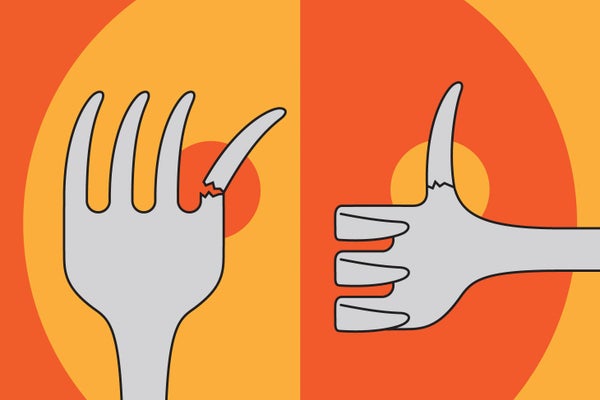October 1, 2023
Thank you for reading this post, don't forget to subscribe!2 min read
Scientists accidentally discover metals that mend themselves without human intervention
By Lucy Tu

Credit:
Thomas Fuchs
The concept of self-healing metals—bridges, spaceships or robots that can spontaneously repair themselves—may be a bit closer to reality. For the first time, scientists have observed solid metal mending its own cracks without human intervention, defying fundamental theories of materials science.
“We would never think of metal as being able to self-heal cracks,” says Stanford University chemical engineer Zhenan Bao, who was not involved in the new study. According to conventional materials theory, applying stress to cracked metal should only expand those cracks. The new findings “will certainly make people rethink how we predict the mechanical reliability of metal structures and equipment,” Bao says.
Michael Demkowicz, a materials scientist at Texas A&M University and co-author of the new study, recently published in Nature, first theorized about self-healing metals 10 years ago when his computer simulations showed that solid metals could “weld” shut small cracks on their own. Because metal typically requires high temperatures to shift its form, many scientists believed the simulations were flawed, Demkowicz says.
“I thought it was a cute toy model but something very difficult to experimentally explore at the time,” says study co-author Khalid Hattar, a nuclear engineer at the University of Tennessee, Knoxville. But then he stumbled on real-world evidence of Demkowicz’s theory. In 2016 he and scientists at Sandia National Laboratories were studying how cracks spread across nanoscale pieces of platinum in a vacuum. They used a specialized electron microscope to prod the metal 200 times per second and watched as fractures spiderwebbed across its surface. Then, after about 40 minutes, the damage started to disappear; the researchers saw the fissures fuse back together as if in a video played in reverse. “I guess Mike was right after all,” Hattar remembers thinking.
The self-healing ability appears to arise when the edges of a crack are pressed close enough together for their respective atoms to bond. In certain “sweet spot” areas, irregularities in a metal’s neat, crystalline structure shift when external tension—such as the force exerted by natural wear and tear—is applied. As these irregularities move, they induce a compressive stress that triggers the rebonding effect.
The Sandia team and Demkowicz replicated their observations with both platinum and copper. Computer simulations suggest that aluminum and silver should also self-heal, but the researchers don’t know whether alloys such as steel can perform this feat. It’s also unclear whether self-healing could ever be a practical tool outside a vacuum; atmospheric particles inside a crack may prevent it from fusing back together, the team says. Still, this phenomenon will cause some materials scientists to rethink what they know about metal. “Under the right circumstances,” Demkowicz says, “materials can do things we never expected.”
